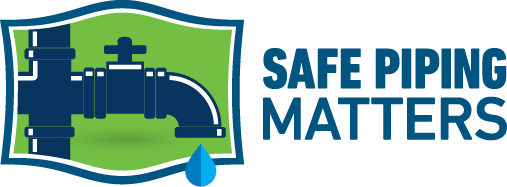Leaching of Chemicals and Microplastics from PEX Pipes
The Hidden Costs of Plastic Plumbing
Plastic piping, including PEX, PVC and others, is now used in over half of all plumbing systems globally. While sometimes praised for its corrosion resistance, real-world exposure to disinfectants like chlorine can initiate chemical degradation of plastic pipes and the release of microplastics (MPs), nanoplastics (NPs), and volatile organic compounds (VOCs) into drinking water. Long-term contact with chlorinated water depletes antioxidants in the pipe wall, degrades the polymer matrix and causes physical cracking. These stressors are intensified by temperature, water pressure and pipe age, all of which increase the likelihood of plastic particle release.

More Than Just Microplastics
PEX leaching isn’t limited to physical fragments. Research shows that plastic pipes can also release a mix of chemical additives, including phthalates, alcohol ethoxylates, tert-butyl alcohol, and methyl tert-butyl ether, some of which persist in drinking water for months. These leachates aren’t just aesthetic nuisances affecting taste and odor, they include known endocrine disruptors and potential carcinogens. A study from Habitable cites the cost of endocrine disruptors alone at $340 billion per year.
Our recent report, Plastic Pipes, Microplastics & Human Health, illustrates how PEX and similar materials shed synthetic particles and chemical residues into potable water supplies. It also describes the ways in which these contaminants cause negative health impacts, especially when layered on top of other environmental exposures.
Another Challenge: Inadequate Safety Standards
 Adding fuel to the fire is a troubling reality: according to troubling findings detailed in Environmental Health, only a fraction of the 42,000+ chemicals in active use today in U.S. commerce have been tested for safety or adequately monitored for exposure risk. This staggering loophole in safety standards may include many chemicals used in PEX and other plastic pipe materials.
Adding fuel to the fire is a troubling reality: according to troubling findings detailed in Environmental Health, only a fraction of the 42,000+ chemicals in active use today in U.S. commerce have been tested for safety or adequately monitored for exposure risk. This staggering loophole in safety standards may include many chemicals used in PEX and other plastic pipe materials.
In fact, fewer than 10% of high-production-volume chemicals can be reliably measured in human biomonitoring studies, revealing significant gaps in the scientific foundation of current exposure assessments. Beyond that, the EPA has found that over 10,000 of these chemicals remain hidden under “confidential business information” rules, meaning the public, and even regulators, often have no way of knowing what they’re exposed to.
Further, exposure assessments often rely on unrealistic assumptions, ignore chemical mixtures, and fail to reflect current use patterns. This includes underestimating the cumulative effects of co-exposure to multiple chemicals, a common scenario with PEX, where VOCs, antioxidants and plasticizers may all leach simultaneously.
What This Means for Building Safety

Regulators often assume that low-level exposures from a single source are safe. But when you add up all the possible exposures from PEX, plus cleaning agents, chlorinated disinfectants and other building materials, the risk profile changes. Vulnerable populations, such as those in low-income housing or older buildings, may face higher risks due to degraded infrastructure or prolonged use of plastic piping systems.
A more safety-minded regulatory mindset would demand exhaustive toxicological proof before granting approval for use, especially for products such as plastic pipes where documented exposures already occur. Until such a precautionary approach is taken, design and construction professionals must weigh the legal and ethical implications of specifying and installing products with unclear risk levels.
Conclusion
Given that studies continue to show degradation of plastic plumbing materials and release of chemical byproducts and microplastics into water, PEX and other plastic piping systems pose significant concerns for drinking water quality. Emerging research reinforces the conclusion that plastic plumbing materials are not biologically inert and call for more studies and better oversight. Broader evaluation frameworks, including assessments that account for chemical mixtures, aging materials, and underrepresented population risks, may help inform future decision-making regarding material choices in plumbing systems.
